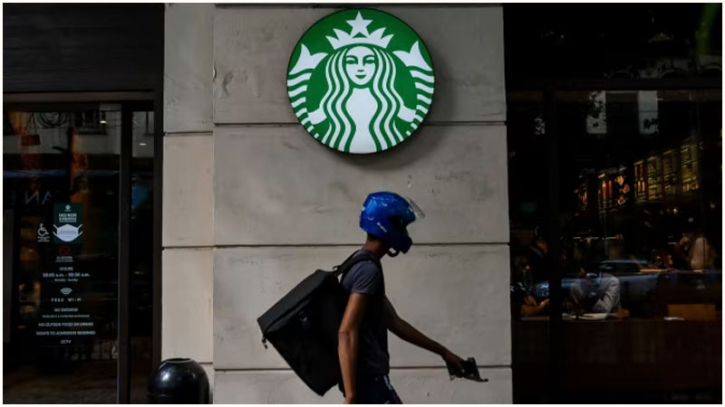Starbucks slows India expansion as consumers tighten belts

America's Starbucks has sharply slowed its ambitious expansion in India as hard-pressed middle-class consumers cut spending at the world's largest coffee chain’s stores.
The US company announced in January last year it would nearly triple its Indian outlets to 1,000 by 2028, but in the last three months of 2024, it opened just over half the 30 targeted for the quarter, according to Sunil D’Souza, chief executive of its Indian joint venture partner Tata Consumer Products.
“We saw traffic dropping,” D’Souza, whose company is an arm of Indian conglomerate Tata, told the Financial Times in an interview. “So I told my team, let’s moderate a bit. We’ll continue to grow and we’re still opening outlets, but we’ve slowed it down momentarily.”
Stagnant wages, heightened inflation and a hangover from an unsecured credit boom have depressed consumer spending in India, feeding into an economic downturn. The government has forecast GDP growth will have dropped to 6.5 per cent in the year to the end of March, from 9.2 per cent the previous financial year.
D’Souza said Tata’s consumer business, which also owns Tetley’s tea and Eight O’Clock coffee, was still optimistic about reaching the joint venture’s 1,000-store goal in the world’s most populous country, but the time it takes “might go up or down by a year”.
Starbucks, which currently has 473 outlets in 74 Indian cities, opened only a net 16 stores in the three months through December, down from a post-pandemic peak and quarterly record of 29 in the January-March period last year.
Consumption accounted for almost 56 per cent of India’s GDP in the last fiscal year, down from the previous 58 per cent, according to state-owned Punjab National Bank. The lender warned that the downward trend had created “ripple effects across consumer goods industries”.
But some experts believe economic growth is rebounding, with the Reserve Bank of India saying last month that a decline in headline inflation was “expected to further support recovery in consumption”.
“This quarter we are seeing numbers starting to look a lot better,” D’Souza said. “There’s a long runway — it’s just that in a country like India, you’ve got to have a slightly longer perspective.”
Analysts see great potential for Starbucks in India, which it entered more than a decade ago saying it could be one of its largest markets outside the US. In neighbouring China, the chain has opened more than 6,500 stores in over 250 cities since 1999.
The Indian deceleration coincides with a wider fall-off for Starbucks globally. In January, it reported a fourth straight quarterly drop in global same-store sales after attracting fewer customers in the US and China, its second-largest market, where it is being undercut by rivals such as Luckin Coffee.
Competition has also intensified in India, a predominantly tea-drinking nation but where strong filter coffee is a favoured brew in the south.
The spread of café culture has been helped by homegrown speciality chains such as Blue Tokai and Third Wave, and in recent years by foreign brands including Canada’s Tim Hortons and UK chain Pret A Manger. Coca-Cola-owned Costa Coffee has been in India for two decades.
Starbucks has sought to cater to local favourite flavours in food, with offerings such as chilli paneer sandwiches, as well as smaller “Picco” cup sizes and milky “short” masala chai at Rs320 ($3.70) — a hefty premium to street-side stalls.
D’Souza said the chain would concentrate new branches in “strongholds” such as Mumbai, Delhi and Bengaluru and would “continue to evaluate prices” as it looked at other more subliminal ways to draw in customers who saw the chain as out of reach.
“In the smaller cities, often we’ve heard that people are not entering because they see this as... a luxury,” he said, adding that to make its cafés more inviting the chain had shifted away from the darker colours often associated in India with high-end brands.
“One of the things we had done was we had started to use lighter colours,” D’Souza said.
.png)




